Porpoise Class: Difference between revisions
Pbcjohnston (talk | contribs) →General Porpoise Class photos: Added photo to class page |
Pbcjohnston (talk | contribs) |
||
| Line 92: | Line 92: | ||
[[File:Pompano post launch.jpg|left|500px|U.S. Navy photo.]] | [[File:Pompano post launch.jpg|left|500px|U.S. Navy photo.]] | ||
<div style="text-align: justify;"><span style="color:#00008B">Pompano on her launch day, March 11, 1937, at the Mare Island Navy Yard, Vallejo, CA. Her launch cradle is seen floating in the water near her bow. It would be recovered and reused for another boat. In order to spread out contracts for engines and provided redundant suppliers, the Navy choose the double acting Model 89DA from the Hooven, Owens, Rentschler Company (HOR) for Pompano. When Pompano began her sea trials in late 1937 she didn't even make it out of the yard before all four engines wrecked themselves due to excessive vibration and improperly forged gearing. The engines had to be removed and sent back to the factory in Hamilton, OH. to be rebuilt. While on the test stand there they failed again. The Pompano sat immobile at Mare Island for over eight months while the Navy and HOR worked through the problems. The engines were repaired and reinstalled and | <div style="text-align: justify;"><span style="color:#00008B">Pompano on her launch day, March 11, 1937, at the Mare Island Navy Yard, Vallejo, CA. Her launch cradle is seen floating in the water near her bow. It would be recovered and reused for another boat. In order to spread out contracts for engines and provided redundant suppliers, the Navy choose the double acting Model 89DA from the Hooven, Owens, Rentschler Company (HOR) for Pompano. When Pompano began her sea trials in late 1937 she didn't even make it out of the yard before all four engines wrecked themselves due to excessive vibration and improperly forged gearing. The engines had to be removed and sent back to the factory in Hamilton, OH. to be rebuilt. While on the test stand there they failed again. The Pompano sat immobile at Mare Island for over eight months while the Navy and HOR worked through the problems. The engines were repaired and reinstalled and through very careful maintenance they were coddled along until 1942 when wartime funds were available to replace them with well-liked Fairbanks Morse engines. The HOR story was a sad one that affected not only Pompano but several other boats as well.</span> | ||
[[181|See more Pompano photos]] | [[181|See more Pompano photos]] | ||
Revision as of 11:58, 12 October 2023
Design and Construction Notes
The Perch group consisted of two boats built at Portsmouth, one at Mare Island, and three built by EB. The three Navy yard boats were the last riveted submarines for the Navy, while the EB boats were fully welded. The ten boats of the Porpoise class also set a new precedent: they were the first USN submarines to have all-electric drive. All previous submarines were equipped with direct drive diesel engines. For the Porpoise class the engines drove only generators and were not connected directly to the propeller shafts. The electricity they generated drove motors attached to the shafts or recharged the massive storage batteries.
These boats were in the thick of the fight against the Japanese from the first day of the war. Four of them (marked by a *) and their brave crews were lost in action and are considered to be "on eternal patrol".
Note... many early photos of these boats will show them with large "P" identifiers painted on their bows and fairwaters. These were used to identify the boats visually while on the surface. They were NOT their names or designations. The use of these identifiers was common on the fleet boats, but faded out in favor of hull numbers in 1938 because their use became confusing.
There were a lot of variations in the external appearance of these boats over the years. For a thorough explanation of these changes, please take a few minutes to read this article.Porpoise (SS-172)
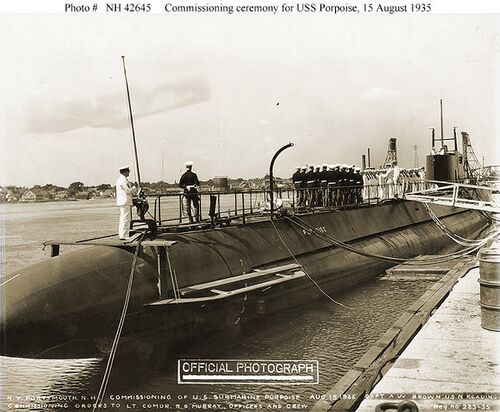
Pike (SS-173)
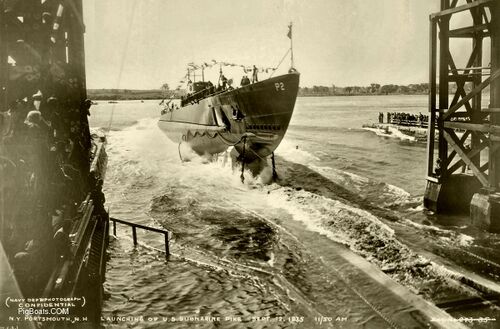
Shark (SS-174)*
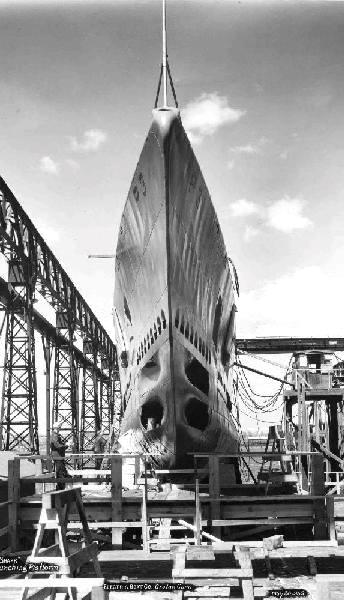
Tarpon (SS-175)
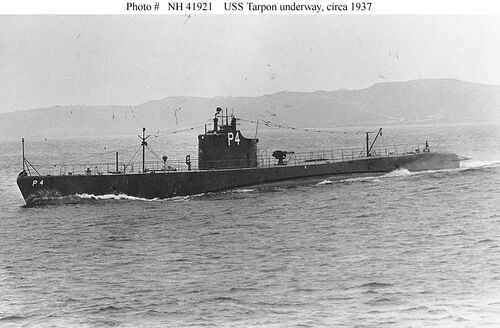
Perch (SS-176)*

Pickerel (SS-177)*
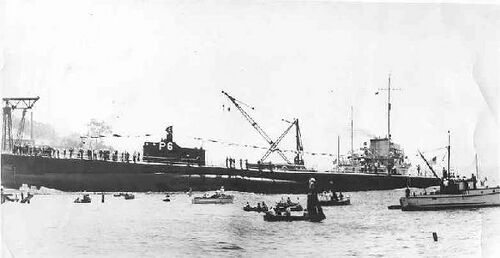
Permit (SS-178)
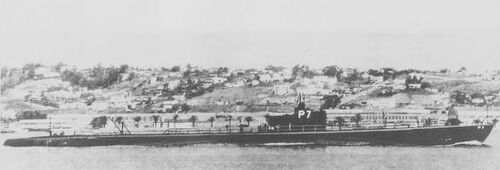
Plunger (SS-179)
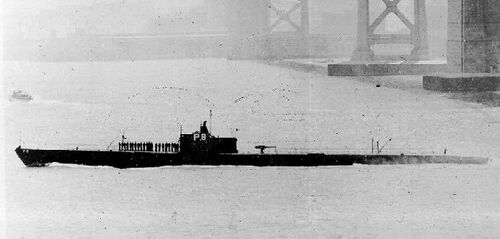
Pollack (SS-180)

Pompano (SS-181)*
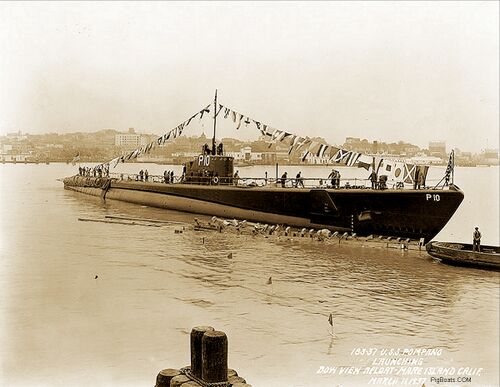
General Porpoise Class photos
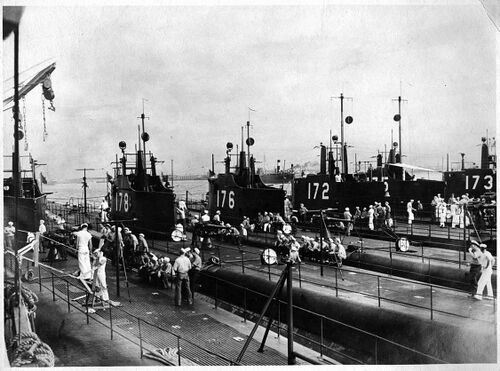
See more general Porpoise Class photos
Page created by:
Ric Hedman & David Johnston
1999 - 2023 - PigBoats.COM©
Mountlake Terrace, WA, Norfolk, VA
webmaster at pigboats dot com
